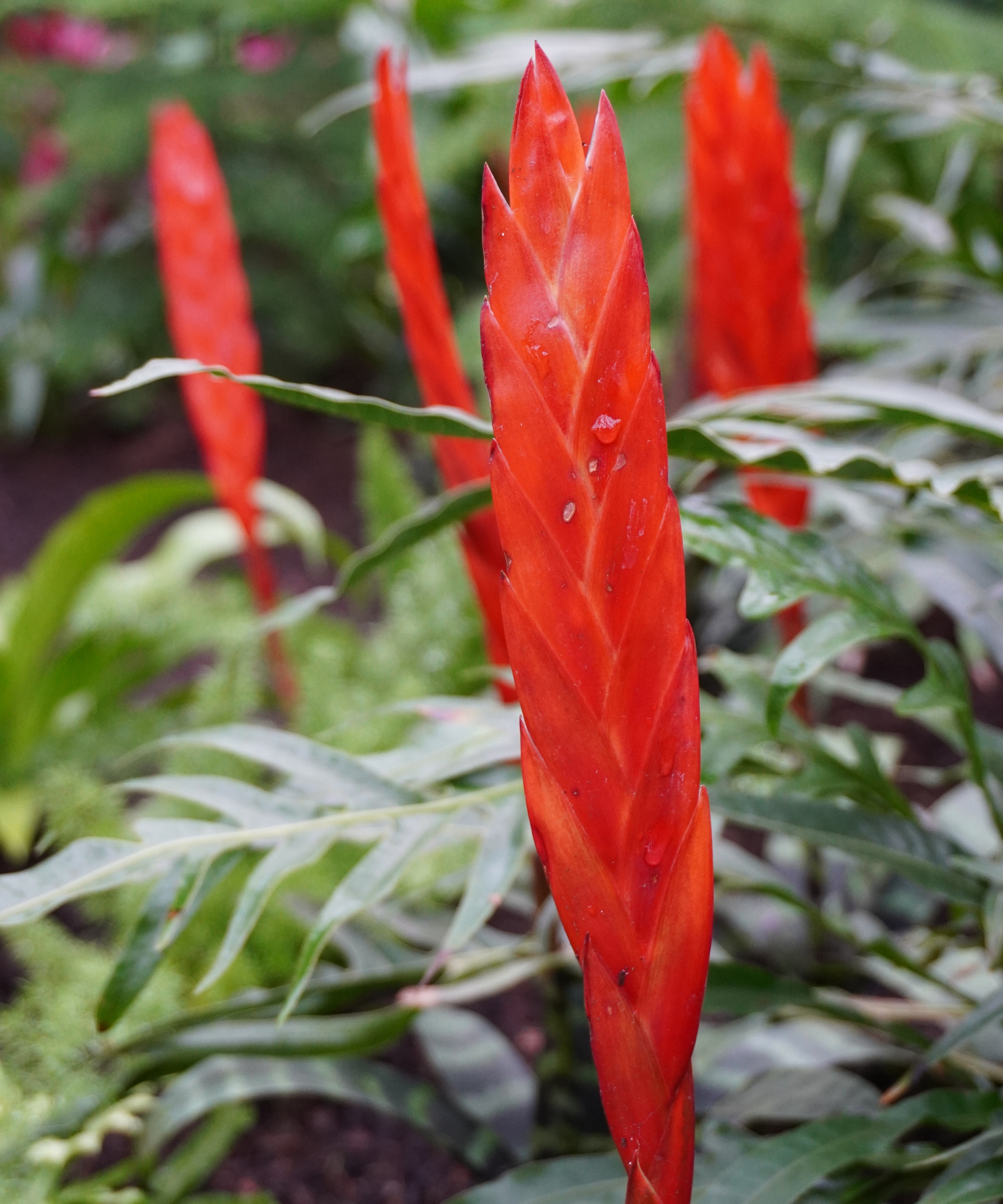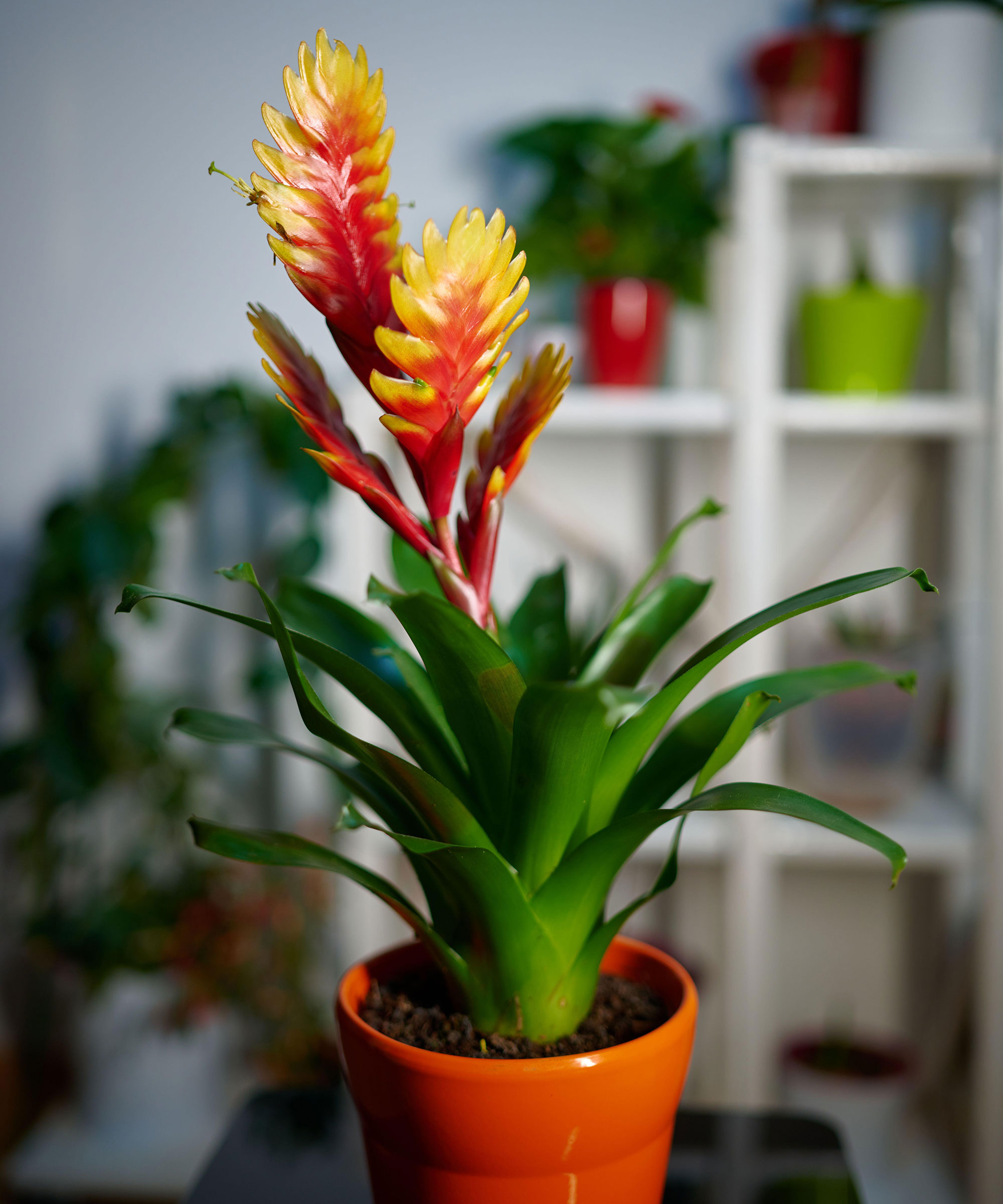
Among the best indoor flowering plants are bromeliads - striking plants loved for their unusual and bright flowers.
Bromeliads are popular indoor plants native to central and southern American rainforests. There are more than 3000 species, offering many unique flower shapes and ranging in colors of red, pink, yellow and even blue.
They are loved for their unique blooms which can be sure to brighten up any room. However, unlike many indoor plants that flower all year round, the majority of bromeliads will only flower once.
'Most bromeliads flower once in their lifetime and then typically die back,' says Autumn Hilliard-Knapp, houseplant expert from Perfect Plants. 'However, some bromeliad species, such as dyckias, Hechtias genera and certain tillsandias can bloom more than once,' she adds.
It can be a sad sight to see those gorgeous blooms fade away, but don't be too quick to throw them out. Experts have shared with us exactly what you should do with your bromeliad once it has finished flowering.

What to do with bromeliads after flowering
Unlike other flowering houseplants, like orchids and African violets, bromeliads will only flower once in their lifetime. However, their fading blooms aren't a sign to throw the plant out.
Provide care for your dormant bromeliad

In the first instance you might assume you don't need to continue looking after a bromeliad once its flowers are spent. However, your bromeliad isn't quite done yet.
'Once a bromeliad finishes flowering, the plant won’t flower again. Eventually the plant will die back, at which point you can compost it,' says Julie Bawden Davis, indoor plant expert at Healthy Houseplants.
'However, before it dies back, the plant will generally send out what are known as pups, which form next to the mother plant,' she adds.
If you keep on top of care for your bromeliad, it will grow baby plants which can then be propagated to reward you with more blooms.
'Once a bromeliad finishes flowering, it is best to continue with your regular care routine to maintain the plant's health and encourage new growth,' says Autumn. 'This includes providing the plant with adequate bright, indirect light to support photosynthesis and growth,' she adds.
It's also key to keep your bromeliad at a happy moisture level. 'Watering should be done from the top and by moistening the soil when needed, allowing it to partially dry out between waterings to prevent root rot,' Autumn says.
You may also find it useful to keep humidity levels up, like with this humidity tray from Amazon or this plant mister from Amazon, to replicate the tropical native environment on bromeliads.
How to propagate bromeliads

Bromeliad pups, or baby plants, will look like smaller plants growing alongside the parent plant.
By keeping on top of care, with sufficient light, warmth and water, the pups will grow bigger until they are ready to be potted up as their own plants.
'Wait for the pups to mature,' says Autumn. 'They will grow in size and develop their own roots and leaves. Allow the pups to reach a size where they are at least one third the size of the parent plant before attempting to move them,' she adds.
When the pups have grown large enough, you should carefully separate them from the base of the parent plant. Take care not to damage its roots in the process and use sterile tools, such as a knife or these plant scissors from Bloomscape.
You can then plant each of the pups in its own pot. 'Position it so that the base of the pup is slightly above the surface of the soil and gently firm the soil around the base of the pup to provide stability,' says Autumn.
To keep the new plants happy, simply treat it as a mature plant with optimal care and growing conditions and watch as new blooms emerge.
'You may also want to fertilize the pups when they get larger, which will help them bloom,' says Julie.
Shop bromeliads online
This vibrant pink bromeliad has lush foliage and long-lasting blooms. Arrives with a white ceramic container.
This bromeliad provides an eye-catching splash of color in your home. May arrive with a red, yellow or orange flower.
The Vriesea Intenso Red is one of the showiest bromeliads known for its bright red spike, lasting as long as six months.
FAQs
How long do bromeliads flower for?
If you provide your bromeliad houseplant with optimal conditions, including lots of bright light, consistent moisture levels and higher humidity, it can bloom for months on end.
'The duration of flowering for bromeliads can vary depending on the species, environmental conditions, and cultivation practices. Typically, the flowering period is up to six months,' says Autumn Hilliard-Knapp, houseplant expert from Perfect Plants.
It's true that these tropical indoor plants only flower once, but don't be too quick to throw them out. Giving your bromeliad regular care even after it has finished flowering will reward you with healthy offsets that will grow more of these striking, bright blooms.







